Now that the weather is getting cooler, at least in these parts, there's nothing as appealing the smell of fresh baking filling the house. I don't think I have posted a simple baking recipe in a long time, so here's one that has become a favorite because it's so delicious and versatile. Here you see them in their cookie incarnation. (I used vegetable-shaped cookie cutters.)

Up close, for scale:
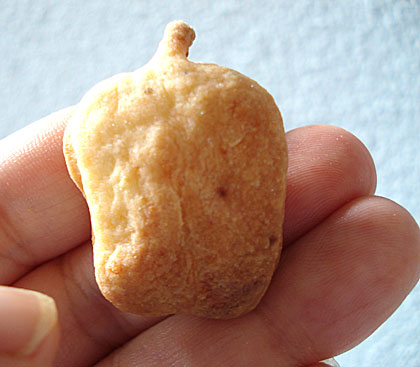
And here is the big scone incarnation:
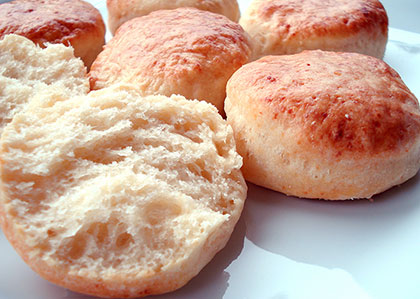
The recipe is based on one for English scones, but it's savory rather than sweet. Inspiration also came in part from Hungarian cheesy scones called pogasca, which I first had on a short trip to Budapest some years ago, and can't forget since. Depending on how big you make them, they can be fluffy-in-the-middle scones, or crispy yet soft little cookies, or biscuits for Brits. (Confusing the matter even further is of course that scones are very much like American biscuits.) In any case they are really easy to make, especially if you have a food processor.
These savory scones/biscuits/cookies are made with olive oil, which imparts the unique fruity-peppery taste of the oil, and also makes them theoretically a tiny bit healthier than using vegetable shortening or butter. You can use butter of course if you prefer that taste. (I hardly ever use vegetable shortening in my cooking, so I can't speak for it. I use lard sometimes, but that's another story.)
I have used three cheeses for this - Gruyère, feta and Parmigiano Reggiano (Parmesan) (plus cottage cheese), but you can use any bits of leftover hard or semi-soft cheese as long as it all adds up to about 1 cup in total.
If you make the scones very small and bake them until they are quite crunchy on the outside, they make perfect nibbles for a wine tasting. Make them larger and they are great fluffy biscuits/scones to have with a hearty soup or stew. You can also turn the large versions into very rich small sandwiches with a little roast ham or something in the middle.
These freeze beautifully and can be heated up in the oven, wrapped in foil, at 300°F/150°C for about 5 minutes for the little ones, 10-15 minutes for the big ones. The little ones can also be kept in an airtight cookie tin for about a week, so they are great to make ahead for a party.
Filed under:
bread party food quickbread scones biscuits cookies savory
To me, plums are like the last gasp of summer before fall settles in. They are related to other summer stone fruit, like peaches and apricots, but they have a much more elusive flavor.
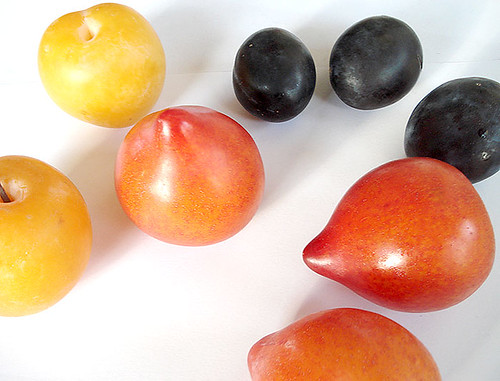
Filed under:
fruit preserves and pickles summer
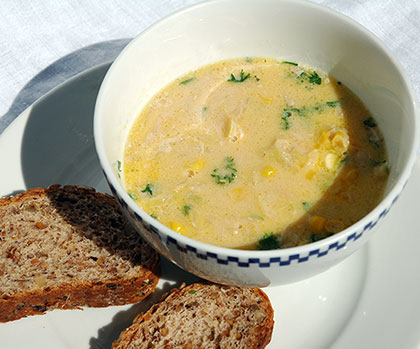
Today's miso soup may not look like miso soup, but it does have miso in it. It shows how to use miso as a background flavoring, instead of the predominant one. Since it has milk and a little butter in it, I've called it Hokkaido style after the northenmost main island in the archipelago that makes up Japan.
Filed under:
japanese soup chicken miso
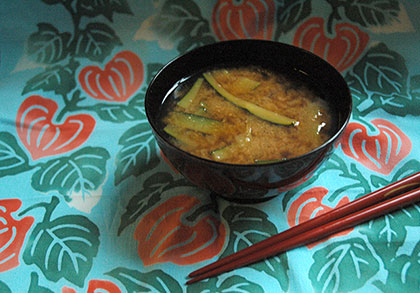
Continuing my series on Japanese home cooking, this week I would like to introduce different kinds of miso soup. Miso soup (misoshiru) is one of the key parts of a Japanese meal. Another kind of soup that is served often is a clear soup called osumashi, but the miso soup base is more adaptable to all kinds of variations.
Filed under:
japanese soup miso
The tall, willowy plant with the long, narrow leaves waved around in the breeze, behind the rows of neat balls of mini-basil. Wondering what it was, I stretched out a hand and rubbed a leaf.
Immediately, my senses were filled with a lemony, refined aroma. It was like a lemon scented geranium, but not quite. It was like lemon balm, but not as minty. The sunburned, kindly faced owner of the market stall said that it was verveine. He went into a long explanation, of which I understood perhaps half, about how to care for the plant. I nodded ernestly and took notes.
Filed under:
fruit preserves and pickles weekend project summer shf
In my previous post about Japanese food, I talked about what makes up a typical Japanese meal, which applies to breakfast, lunch and dinner. There's a fourth meal that is very much a part of Japanese food life - oyatsu. Oyatsu is snack time, and it's usually eaten at 3 in the afternoon.
Filed under:
dessert japanese snack baking cake
Summer is slowly drawing to a close. Sure it's mid-August, and the weather here has actually warmed up since the cold spell we had around the beginning of the month. But I can tell that summer is now an old lady because the taste of some produce is already changing. Peaches for instance. They were so sweet and juicy just a few days ago, but the ones I've bought the last few days are already either a bit too hard, a bit too sour, or rather mushy (showing they've been 'ripened' after being picked).
Filed under:
dessert fruit weekend project summer